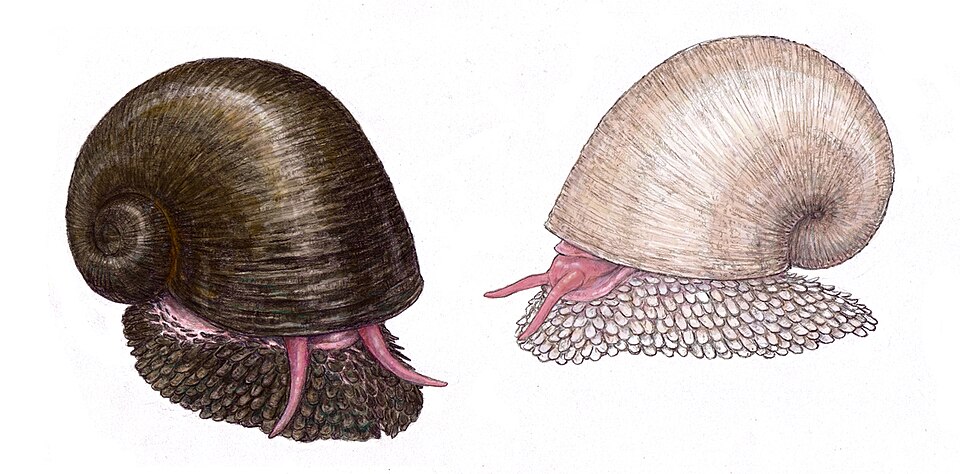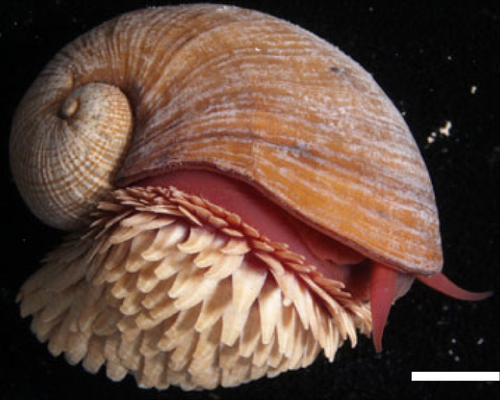The Scaly-foot Snail (Chrysomallon squamiferum) is a fascinating and rare deep-sea hydrothermal vent mollusk, known for its unique iron-plated shell and armor-like scales. Here are the key features and facts about this extraordinary species:

🐌 General Overview
- Scientific Name: Chrysomallon squamiferum
- Common Name: Scaly-foot Snail or Scaly-foot Gastropod
- Discovered: 2001
- Habitat: Hydrothermal vents in the Indian Ocean, typically at depths of 2,400–2,900 meters (7,900–9,500 feet)
🔩 Unique Features
- Iron Armor:
- Its shell is made up of three layers:
- Outer layer: Iron sulfide (pyrite and greigite)
- Middle layer: Organic material
- Inner layer: Aragonite (a form of calcium carbonate)
- This makes it the only known animal to incorporate iron into its skeleton for protection.
- Its shell is made up of three layers:
- Sclerites (Scales):
- The snail’s foot is covered with iron-mineralized scales, known as sclerites.
- These are thought to provide protection against predators like vent-dwelling crabs.
- Symbiosis:
- It hosts chemosynthetic bacteria in a specialized esophageal gland.
- These bacteria convert toxic chemicals from hydrothermal vents into energy for the snail — similar to how corals rely on algae.
🧬 Conservation Status
- IUCN Red List:Endangered (2019)
- Threatened by deep-sea mining due to its limited habitat range and specialization.

🧪 Scientific Significance
- The Scaly-foot Snail is of great interest to:
- Biomimicry: Its shell structure inspires advanced materials and armor designs.
- Astrobiology: Its extreme-environment adaptation helps scientists understand life’s potential on other planets.
Would you like a diagram, an infographic, or more detail on a specific aspect (e.g., its symbiosis, shell structure, or threats)?